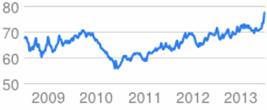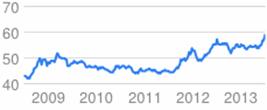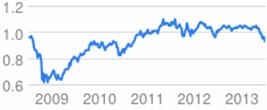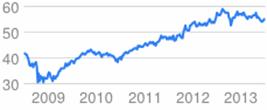Aug 02 : While the rumour mills have been working overtime to ‘announce’ the reduction of import duties from 150% to 40%, thus possibly hitting the sales of premium Indian wines, our producers should take solace from the fact that due to the continued rupee devaluation, the import costs have increased by almost 30% and even with the producers and importers absorbing the impact partially, a minimum rise of 15-20% is imminent, writes Subhash Arora
 Imagine a bottle of wine in EU costing €3 at the Euro pegged at Rs.60. The costs including the customs duty of Rs.270 @150% would be Rs. 180+270=Rs. 450. Then of course there are various costs and margins added including the excise and VAT at 20% to reach the final retail price which may be around Rs. 1700-2000. Imagine a bottle of wine in EU costing €3 at the Euro pegged at Rs.60. The costs including the customs duty of Rs.270 @150% would be Rs. 180+270=Rs. 450. Then of course there are various costs and margins added including the excise and VAT at 20% to reach the final retail price which may be around Rs. 1700-2000.
Now imagine the import duty reduction after EU signs the FTA with India and brings down the duties to the currently speculated 40%. Optimistically speaking this would take effect from 2016 but is most likely to extend to beyond, maybe 2017. Also presume that the continued devaluation trend of rupee against euro which is already at Rs.78 to a euro and is flirting at Rs.80, takes the rupee to Rs.100 against the euro. In that not-so-impossible scenario, cost of imported wine at reduced duties @40% would be Rs.300+120=Rs.420, only 8% cheaper than current costs!
The point I am trying to make is that the impact of reduced duties from 150% to 40% would be almost completely eroded by the devaluation of the rupee. Let us look at the recent trends of the rupee against the three currencies during the recent years that affect our imports-Euro, US dollar and Aussie dollar:
Euro
Let us look at the euro trend during the last 5 years:
 After a relative steady price in the mid 60s with some volatility, during 2009 it had taken a dive to around Rs.60-becoming even cheaper for a short while but after taking a dive from Rs. 70 to almost 57-58 in 2010, it has been climbing steadily and is currently at Rs. 78.04, indicating an increase of around 30% from the earlier levels. After a relative steady price in the mid 60s with some volatility, during 2009 it had taken a dive to around Rs.60-becoming even cheaper for a short while but after taking a dive from Rs. 70 to almost 57-58 in 2010, it has been climbing steadily and is currently at Rs. 78.04, indicating an increase of around 30% from the earlier levels.
US dollar
Against US dollar the trend is even more upwards
 After touching Rs. 50 in 2009-10 it went down to the mid 40s in 2011 but has seen a steady climb to Rs.59.66 yesterday with a devaluation of over 32% from the average Rs.45. After touching Rs. 50 in 2009-10 it went down to the mid 40s in 2011 but has seen a steady climb to Rs.59.66 yesterday with a devaluation of over 32% from the average Rs.45.
Devaluation against Australian Dollar
Thanks to the ever increasing imports from Australia of India’s most selling brand Jacob’s Creek and the world’s biggest wine-only company by revenue, exporter Treasury Wine Estates (TWE), Australia accounts for over 20% of imported wines. The Australian wine industry has been in the doldrums because of falling exports due to the appreciating A$ but is in an upbeat mood due to their recent continuous depreciation of dollar against the US dollar bringing it to a 33-month low of .92 yesterday.
 There is a downward trend with the Australian dollar that was almost 65-70 cents to the US dollar in 2009-10 and crossed the 1:1 barrier, continued to climb to 1.07-1.08. It has been gradually coming down and has seen a distinctly downward trend. At 92 Australian cents to the US dollar, there is a wave of optimism in Australia today with the producers being upbeat about exports. But let us see how the costs would affect the Indian imports. There is a downward trend with the Australian dollar that was almost 65-70 cents to the US dollar in 2009-10 and crossed the 1:1 barrier, continued to climb to 1.07-1.08. It has been gradually coming down and has seen a distinctly downward trend. At 92 Australian cents to the US dollar, there is a wave of optimism in Australia today with the producers being upbeat about exports. But let us see how the costs would affect the Indian imports.
 We had to pay Rs. 30 for a dollar in 2009 but went up to Rs. 40 in 2010. It touched an all time high at Rs.60 before settling at Rs.55.20 yesterday. If we peg the Australian dollar to around Rs. 40 in mid 2010 it is still over 35% more expensive to import from Australia! We had to pay Rs. 30 for a dollar in 2009 but went up to Rs. 40 in 2010. It touched an all time high at Rs.60 before settling at Rs.55.20 yesterday. If we peg the Australian dollar to around Rs. 40 in mid 2010 it is still over 35% more expensive to import from Australia!
The current trend has been to increase the retail prices by around 10%. But as the fresh supplies start coming in at new higher prices, the cost increase is going to be even more-perhaps 15-20% higher than the previous year. While the retail and Hotels will have to bear at least some of the increase, the customer can expect to pay a minimum of 15% increase from last year. The Indian producers would feel relieved and could increase their market share more during the current year and the sale of imported wines could suffer a dip from the expected 20-25% increase in 2012-13 due to the price increase.
Subhash Arora
|